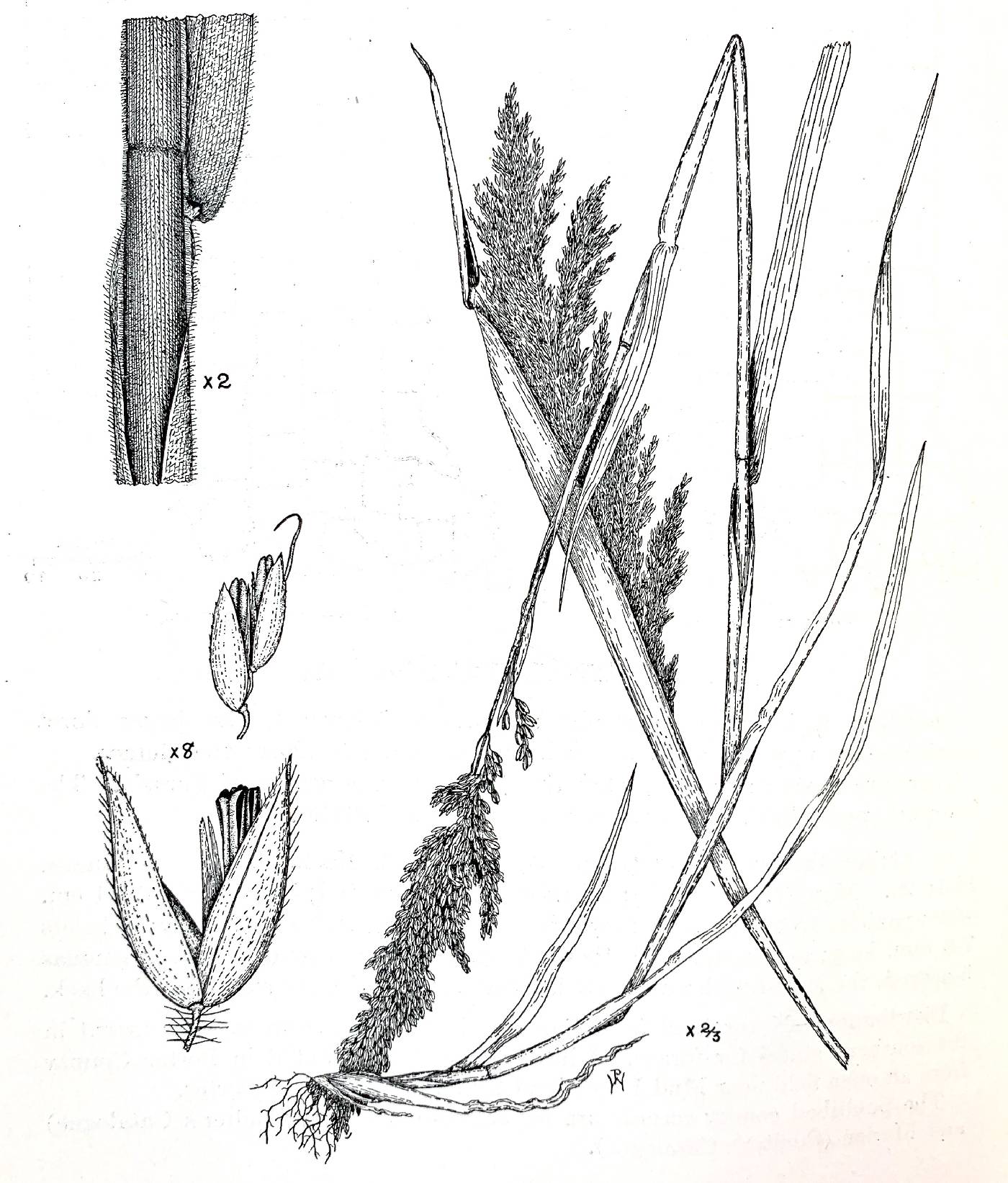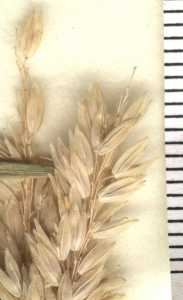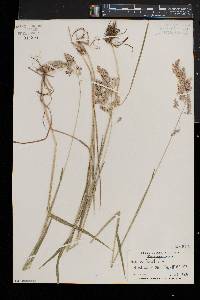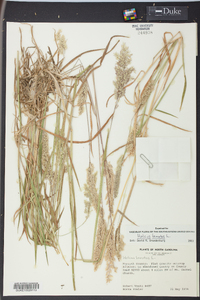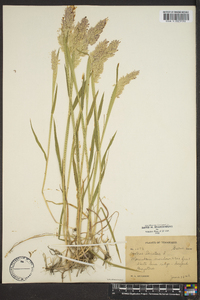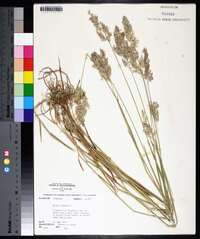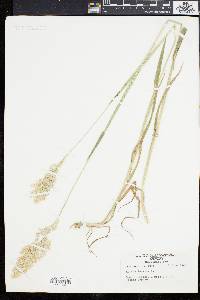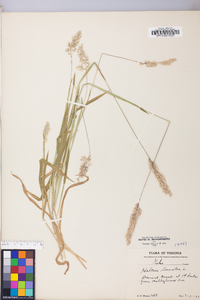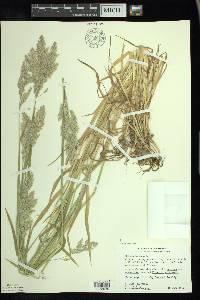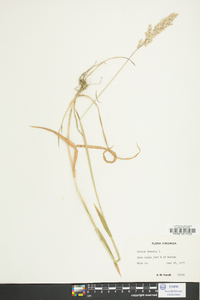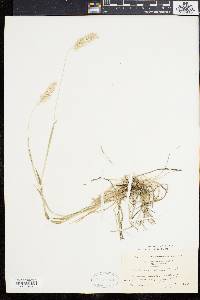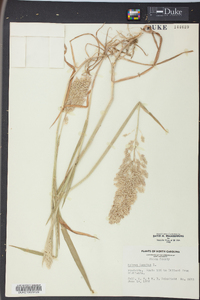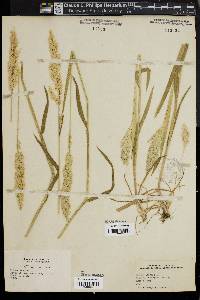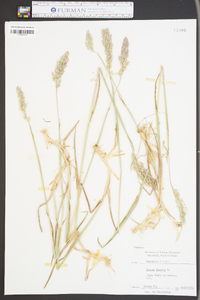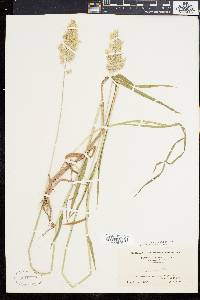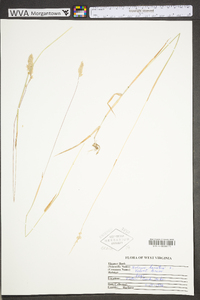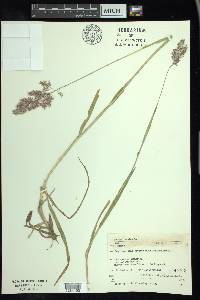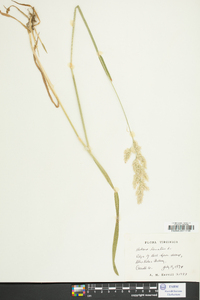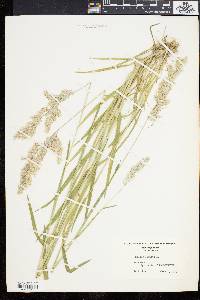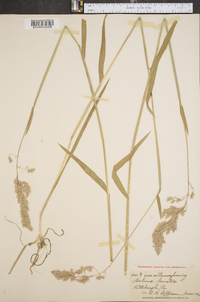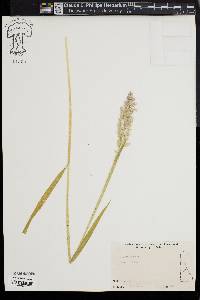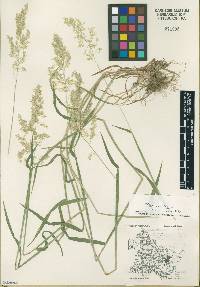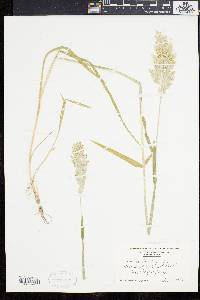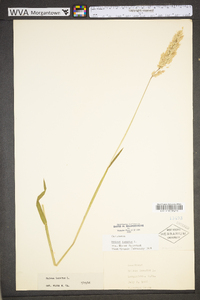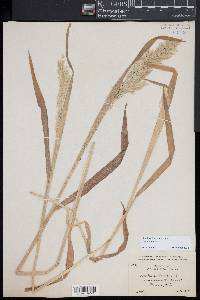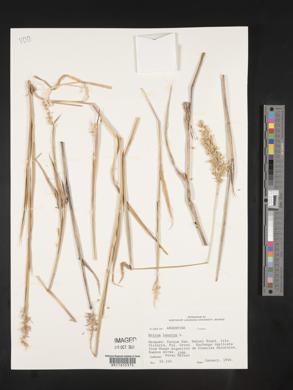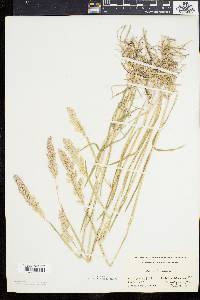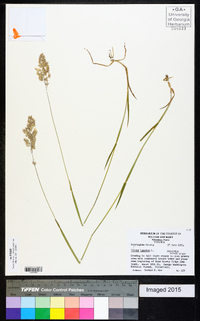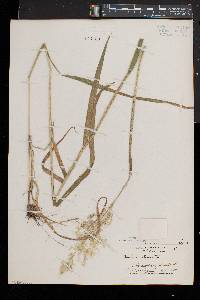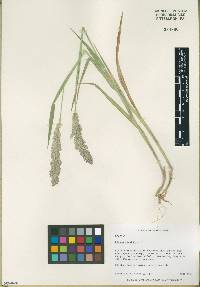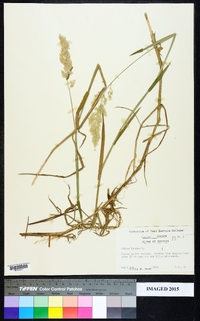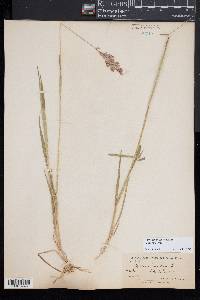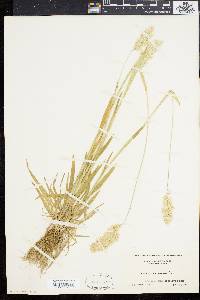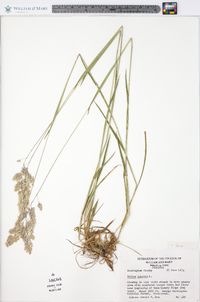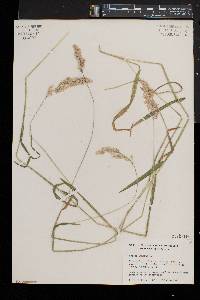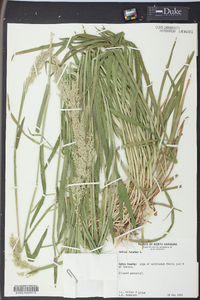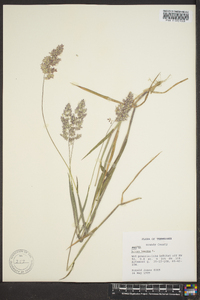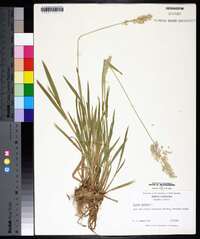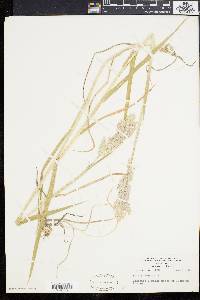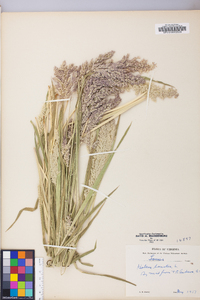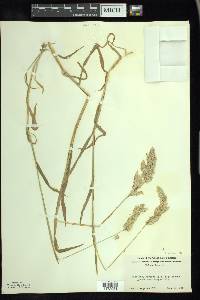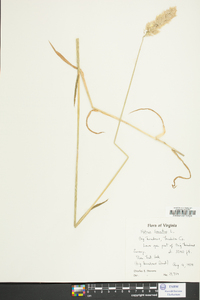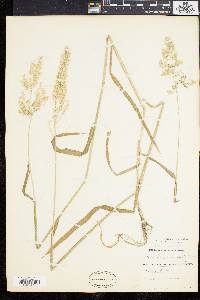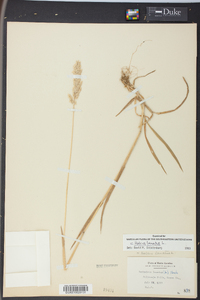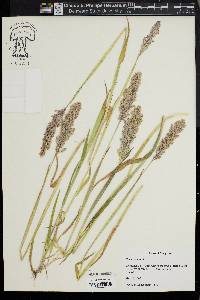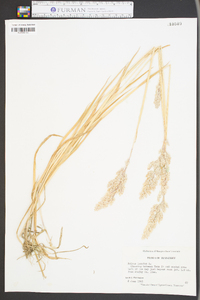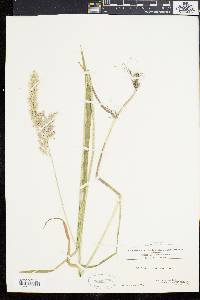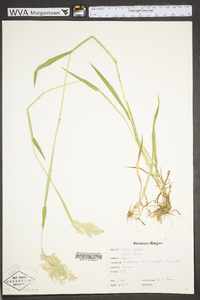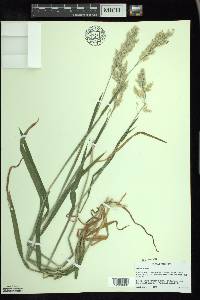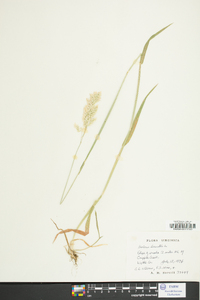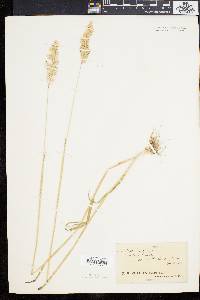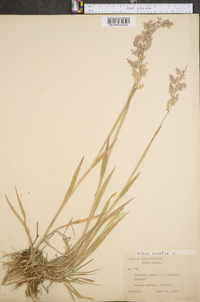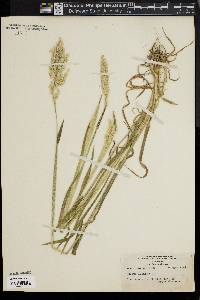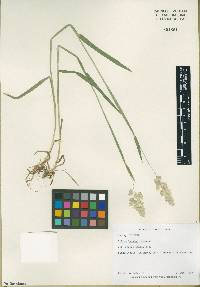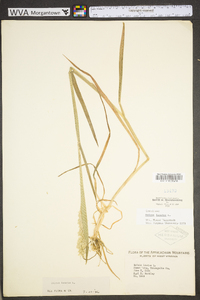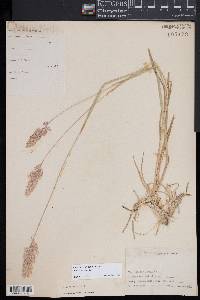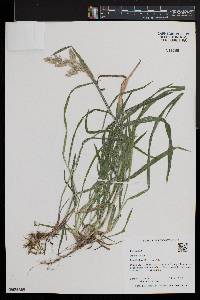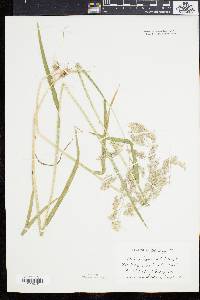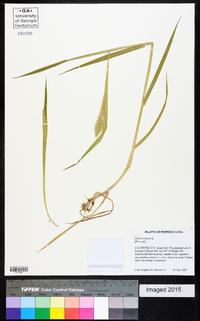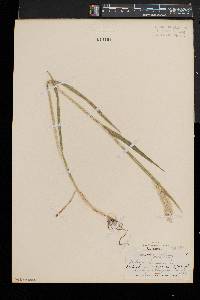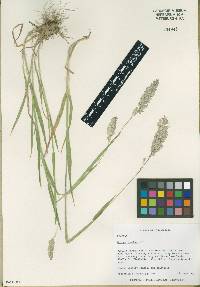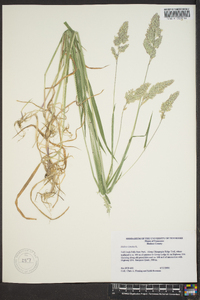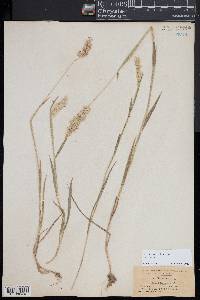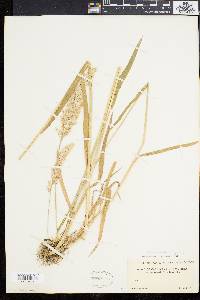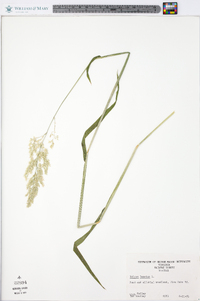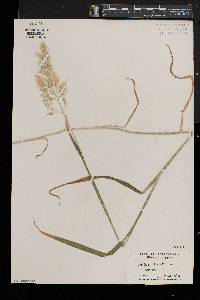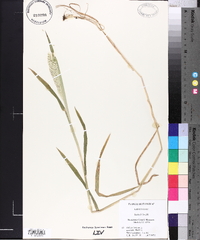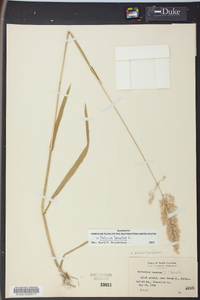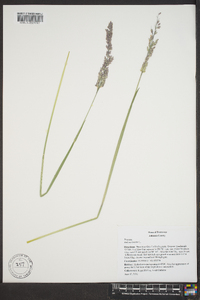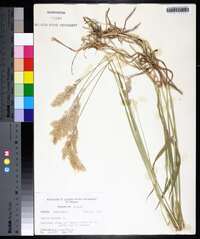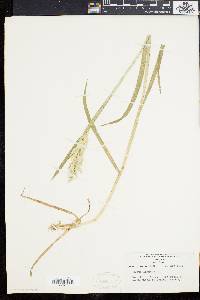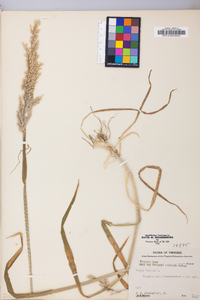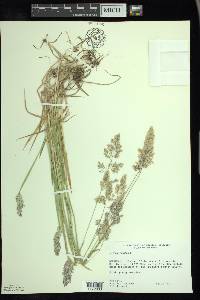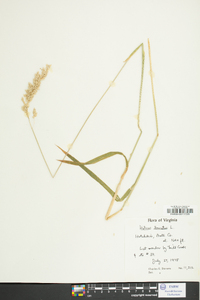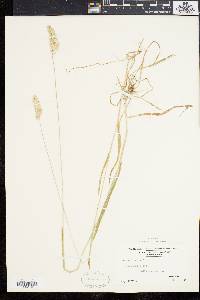Holcus lanatus
|
|
|
|
Family: Poaceae
Common Velvet Grass, more...common velvetgrass, velvetgrass, Yorkshire fog, Houlque Laineuse
[Aira holcus-lanata Vill., moreAira holcus-lanatus (L.) Vill., Holcus lanatus var. albovirens Junge, Nothoholcus lanatus (L.) Nash] |
Plants perennial; cespitose, not rhizomatous. Culms 20-100 cm, erect, sometimes decumbent; lower internodes densely pilose, with hairs to 1 mm; uppermost internode often glabrous. Sheaths densely pubescent; ligules 1-4 mm, truncate, erose-ciliolate; blades 2-20 cm long, (3)5-10 mm wide, densely soft-pubescent. Panicles 3-15(20) cm long, 1-8 cm wide; branches hirsute; pedicels 0.2-1.6(4) mm, pilose, hairs to 0.3 mm. Spikelets 3-6 mm; rachillas 0.4-0.5 mm, glabrous. Glumes exceeding and enclosing the florets, membranous, ciliate on the keels and veins, usually scabrous, puberulent, or villous between the veins, especially towards the apices, whitish-green, often purple over the veins and towards the apices; lower glumes lanceolate, narrow, acute; upper glumes ovate, wider and longer than the lower glumes, midveins often prolonged as an awn to 1.5 mm, apices obtuse, somewhat bifid; calluses sparsely hirsute; lemmas 1.7-2.5 mm, acute, erose-ciliate; upper lemmas shallowly bifid, awns 1-2 mm, often purple-tipped, slightly twisted and strongly hooked at maturity; anthers (1.2)2-2.5 mm. 2n = 14. Holcus lanatus grows in disturbed sites, moist waste places, lawns, and pastures, in a wide range of edaphic conditions and at elevations from 0-2300 m. A native of Europe, it was widely distributed in North America by 1800. It is an ancestor of the polyploid complex represented by Holcus mollis. In Europe, it hybridizes with tetraploids of H. mollis to form a sterile triploid that spreads vegetatively. Culms 4-10 dm, without rhizomes, soft-villous below, the upper internode usually glabrous; sheaths soft-hairy; blades pale green, soft-hairy, 4-10 mm wide; infl narrowly ovoid, dense, 5-15 cm; glumes 4-5 mm, acute, villous on the surface, short-hirsute on the veins; lemmas smooth and shining, 2 mm, obtuse, the awn of the upper one hooked, 1-2 mm, scarcely exserted from the glumes; 2n=14. Meadows and roadsides in moist soil; native of Europe, now well established throughout our range. Gleason, Henry A. & Cronquist, Arthur J. 1991. Manual of vascular plants of northeastern United States and adjacent Canada. lxxv + 910 pp. ©The New York Botanical Garden. All rights reserved. Used by permission. From Flora of Indiana (1940) by Charles C. Deam As yet, this species is a rare escape in Indiana. Weatherwax found it in a hayfield in Owen County in 1918. In 1933 he found it along a roadside in Brown County about 15 miles east of Bloomington, and in 1934, about one and a fourth miles west of Merriam, Noble County. Kriebel, in 1935, found about a dozen plants under a beech tree in an open woods in sec. 18, Pleasant Run Township, Lawrence County. ...... Indiana Coefficient of Conservatism: C = null, non-native Wetland Indicator Status: FACU Deam (1929): A Clapp specimen is now in the Field Museum and was collected June 9, 1836. |

